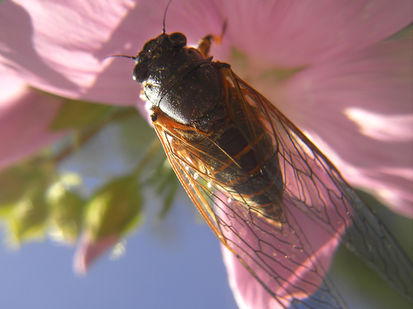Flies
43 species of fly have become extinct in England in the last 200 years, 10 of which are shown below

Species: Belida angelicae
Extinct: 1936

Species: Clitellaria ephippium
Extinct: 1850
© John Reinecke
© Hectonichus


NEW FOREST CICADA
Cicadetta montana

The New Forest Cicada is the last of its kind in the UK.
-
Rarity: Once found in the New Forest in Hampshire, but there are now serious concerns about its continued existence. It is very likely that it is now extinct in the UK.
-
Cause of decline: Changes to the habitat and poor habitat management. Extreme isolation of remaining populations.
Cicadas are not insects that are usually associated with the UK, instead, their distinctive calls tend to conjure up images of hot and exotic locations. However, there is one species of cicada that is native to England, the New Forest Cicada.
In the middle of the 20th century, over a hundred of these insects were heard calling in one location in the New Forest, which must have been an incredible sound. Sadly, it has now been over 30 years since the cicada was last recorded in England. This means that there is a high chance that the species is now extinct.
The New Forest Cicada can be up to 3cm long and has clear visible gold rings and large transparent wings. In their last spring before emergence, the nymphs build a turret like structure from clay and leaf matter on the surface of the soil. These turrets are a reliable means of identifying breeding sites for the species, and can be found at any time between mid-March and late summer, even after the adults have long emerged.
In England, it has only ever been found in the New Forest. It inhabits woodland rides and glades that are in plenty of sunshine. It has also been found in sunny areas between open grass/heathland and woodland with a scrub edge.
Latest news
The New Forest Cicada has always had a limited distribution within the UK, being found only in the New Forest, Hampshire. No confirmed sightings of the species have been made since the early 1990s, despite extensive searches during the period 1996-2014.
In 2024 we took the decision to embark on a re-introduction project. In 2025, we were able to capture and transport animals from France to form part of a captive breeding programme. We are now patiently waiting to see if any cicadas emerge!


